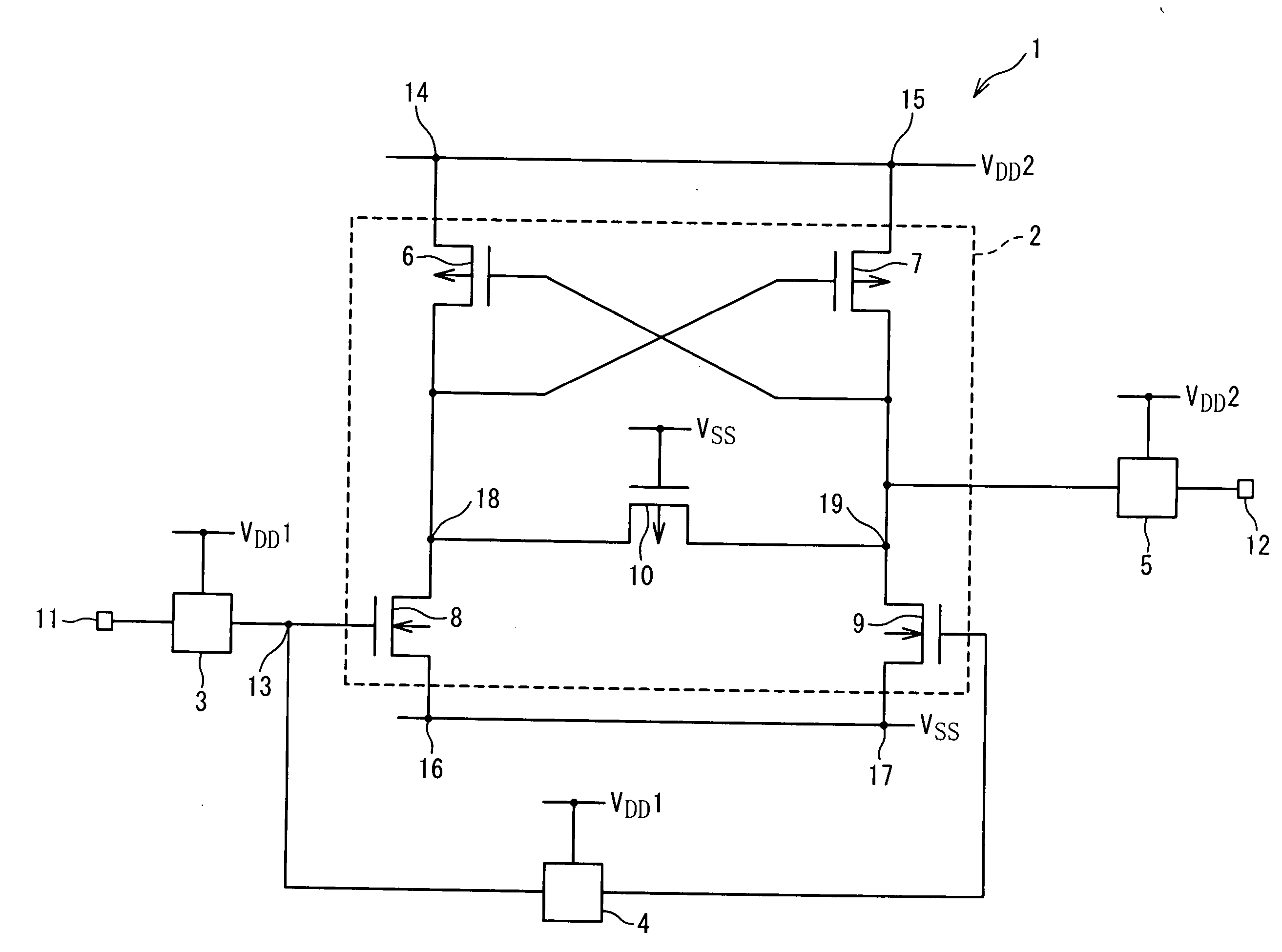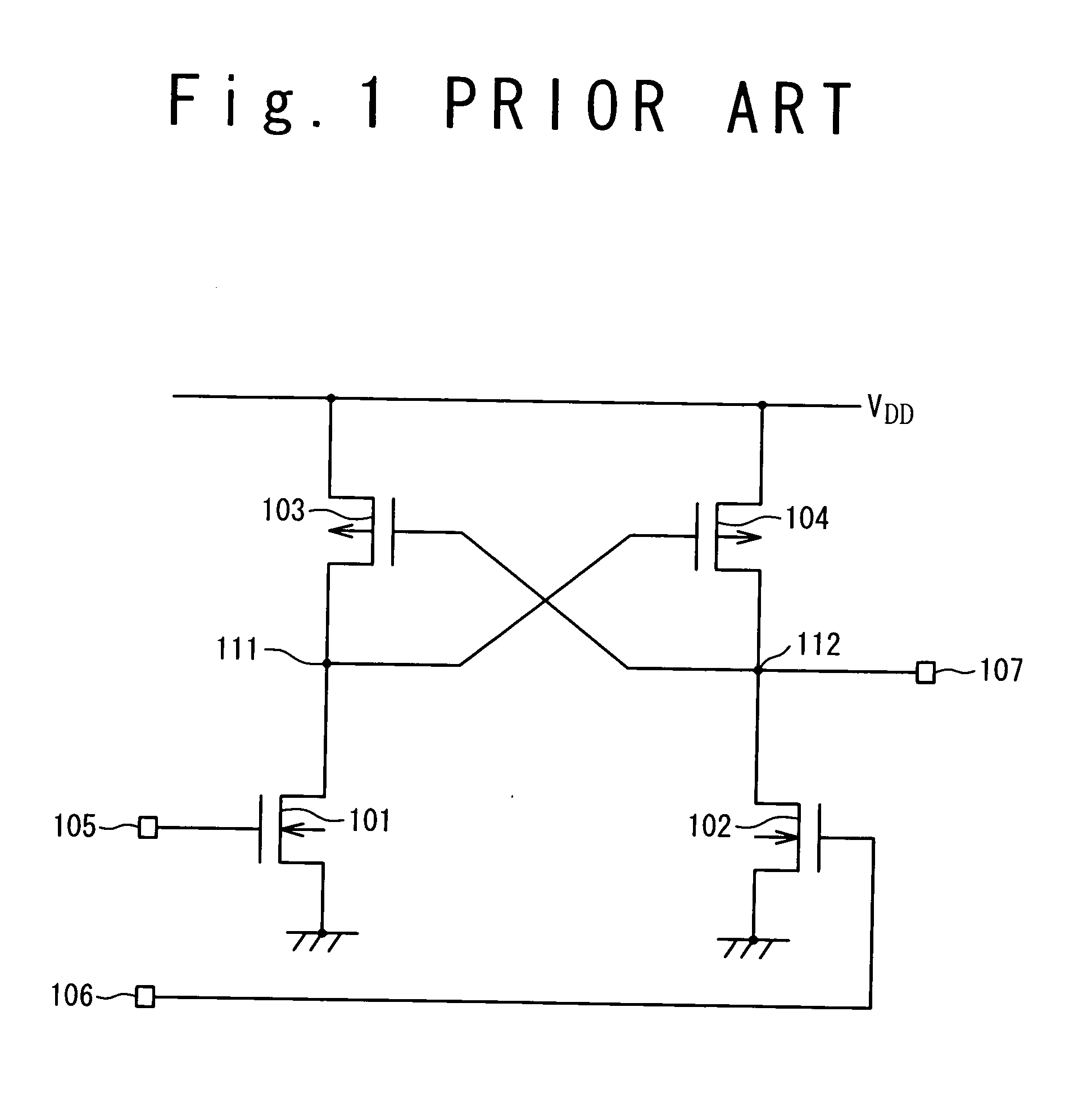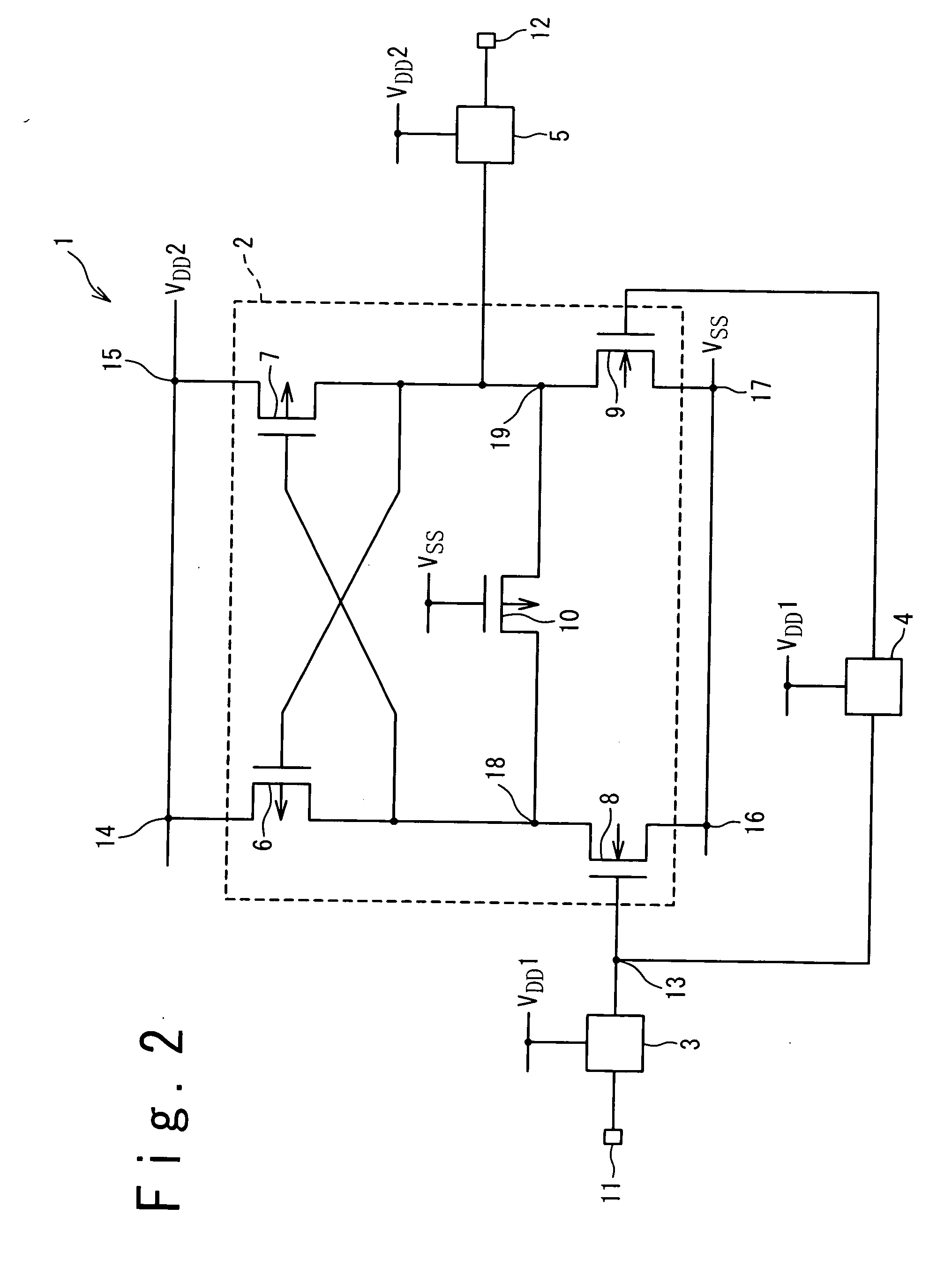Level shifter circuit
- Summary
- Abstract
- Description
- Claims
- Application Information
AI Technical Summary
Benefits of technology
Problems solved by technology
Method used
Image
Examples
first embodiment
[0036]FIG. 2 is a circuit diagram showing a configuration of a level shifter circuit 1 according to a first embodiment. In the present embodiment, a first power supply voltage V1 is supplied from a first power supply line VDD1, and a second power supply voltage V2 is supplied from a second power supply line VDD2. Here, the first power supply voltage V1 is smaller than the second power supply voltage V2.
[0037] Referring to FIG. 2, the level shifter circuit 1 according to the present embodiment includes a level shifter part 2, a first logic circuit 3, a second logic circuit 4 and a first output logic circuit 5. The first logic circuit 3 is a logic circuit for generating a first input signal in response to a basic input signal supplied through an input terminal 11. The first input signal output from the first logic circuit 3 is supplied to a first NMOS transistor 8 of the level shifter part 2 via a first node 13. The first input signal is also input to the second logic circuit 4 via t...
second embodiment
[0057]FIG. 9 is a circuit diagram showing a configuration of a level shifter circuit 1 according to a second embodiment of the present invention. Referring to FIG. 9, the level shifter part 2 in the second embodiment has a passive resistive element 21 which is connected between the sixth node 18 and the seventh node 19. The level shifter circuit 1 in the above-mentioned first embodiment is provided with the MOS transistor between the sixth node 18 and the seventh node 19 as the resistive element. As shown in FIG. 9, the level shifter circuit 1 according to the second embodiment has the passive resistive element 21 as the resistive element. The passive resistive element 21 is a resistance element having the same resistance as the ON resistance of the foregoing resistive element 10 (or the resistance NMOS transistor 20). Such the passive resistive element 21 is connected between the sixth node 18 and the seventh node 19. As a result, the passive resistive element 21 operates similarly...
third embodiment
[0058]FIG. 10 is a circuit diagram showing a configuration of a level shifter circuit 1 according to a third embodiment of the present invention. Referring to FIG. 10, the level shifter part 2 in the third embodiment has a resistance MOS transistor 22 which is connected between the sixth node 18 and the seventh node 19. As shown in FIG. 10, a gate of the resistance MOS transistor 22 is connected to a power down signal input terminal 23. Supplied to the level shifter part 2 through the power down signal input terminal 23 is a power down signal PD which can deactivate the resistance MOS transistor 22. That is, the resistance MOS transistor 22 can be set to an OFF state by the power down signal PD. The resistance MOS transistor 22 shown in FIG. 10 is a PMOS transistor. It is therefore possible to deactivate the resistance PMOS transistor 22 by applying the second power supply voltage V2 as the power down signal PD, for example. According to the configuration, as described above, the po...
PUM
 Login to View More
Login to View More Abstract
Description
Claims
Application Information
 Login to View More
Login to View More - R&D
- Intellectual Property
- Life Sciences
- Materials
- Tech Scout
- Unparalleled Data Quality
- Higher Quality Content
- 60% Fewer Hallucinations
Browse by: Latest US Patents, China's latest patents, Technical Efficacy Thesaurus, Application Domain, Technology Topic, Popular Technical Reports.
© 2025 PatSnap. All rights reserved.Legal|Privacy policy|Modern Slavery Act Transparency Statement|Sitemap|About US| Contact US: help@patsnap.com



